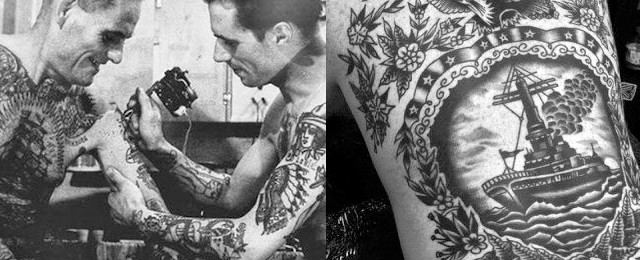
Definitive History of Tattoos – The Ancient Art of Tattooing
Tattoos are no longer reserved for bikies and Yakuza members. People all across the world now sport different types of in on their bodies. From the tribal stripe peeking out of the bank teller’s shirt collar to full sleeves on the arm of the chef at your local restaurant, tattoos are everywhere.
More and more people are expressing themselves through tattoos, with a study in 2012 finding around 45 million people (21%) in America alone have one or more tattoos. This was backed up by a Harris Poll survey in 2015 that found around three in ten Americans (29%) have at least one tattoo.
The results of the study also found that 15% of men and 13% of women in the US have tattoos, which is quite a large number. The Harris Poll also stated seven in ten people have two or more tattoos, emphasizing the popularity of tatts.
So why the sudden increase in people getting tattoos? There are many different factors, but many tattooists point to celebrity tattoo culture as the reason behind modern tattoo culture taking off and integrating with the mainstream.
The Rise of Celebrity Tattoos
Shows such as Miami Ink and Ink Master helped make tattoos acceptable while a mass of celebrities started getting tatts and making it a cool thing to do. The likes of David Beckham, Kat Von D, Rihanna, and Scarlett Johansson are all people who have shown off their tattoos and influenced others to get inked.
The exposure these shows and famous people have created has helped tattooing become the 6th fastest growing American industry. There are an estimated 21,000 tattoo parlors in the US alone, with Las Vegas and Miami leading the way with over 100 tattoo shops combined.
Americans spend a whopping $1.65 billion getting inked yearly. 36% of those are US citizens aged 18-29 who have at least one tattoo.
While tattoos are more of a fashion statement these days, they have their roots in ancient traditions dating back centuries. If you want to know more about the history of tattoos and how they have evolved over the years, read on.
Historic Roots
As an expressive art form, tattooing has a much longer history than many people realize. Originally intended as protection of the body, later it was used to mark people as belonging to specific groups, and only in the modern era has it become a form of self-expression.
Many cultures around the globe practiced the art of tattooing at one time or another. Most of them still do; well-known modern tattoo masters hail from as wide-ranging places as Japan, Egypt, Australia, and the United States.
Today’s ink colors and designs would not exist had it not been for the first symbolic markings made on another person’s body for whichever chosen purpose: ceremonial, identification, protection, or another spiritual reason.
Making the Marks

The first tattoos were made by scratching or pricking the first layer of skin and spreading ashes or oil onto the scratches. Eventually, as it became available, colored dyes and ink were used to bring new life to the symbols.
Tattooing instruments were rather crude as illustrated by some bronze instruments discovered in Egypt. These large, flat, needle-like tools date back to 1450 BCE and are the oldest known identifiable tattooing instruments known.
Europe

Permanent, inked-in designs are known from European mummies as old as 5,300 years. The frozen mummy now dubbed the “Iceman” was discovered in the Italian mountain permafrost in the early 1990s. Otzi, as he is better known, had more than 60 tattoos on his body; most of them are made up of sets of lines or even “x’s.”
Certainly far away from the complicated designs of today, it has been questioned as to what Otzi’s tats meant. In 2015, a team of Italian anthropologists studied these markings and have concluded that they were meant as therapy for arthritis in his spine and joints.
There is a great myth that tattooing did not catch on in England and Europe until after James Cook visited Tahiti in 1769. This is largely untrue, however, as many people sported them prior to that time, including people of “high society.” Men involved in dangerous lines of work, such as coal miners and sailors, often preferred tattoos believed to protect them from the elements. Anchors, sea birds, and dancing girls were all common designs for sailors. Pick-axes and skulls were commonly worn by miners.
The tattooing craze reached a high point in England in the 1860s after the Prince of Wales, later to be named King Edward VII, got his first tattoo in Cairo when on a royal tour of Egypt. It is said to have been a “Jerusalem cross” on his arm. He sent his sons to Japan in 1881 where they received their first arm tats from a Japanese master, Hori Chiyo.
Thanks to King Edward, tattoos became more acceptable and people beyond sailors and miners could sport their own artwork without being looked down upon as criminals or degenerates. Many well-to-do Britons traveled to Japan and Egypt in order to have their own tattoos done during this time because professional artists were few and far between at home.
One of the most famous of all British tattoo artists was Tom Riley. Born in 1870, it seemed that he would follow in his father’s footsteps and become a bricklayer. His destiny was laid out during his military career, however, when he had his first tattoo done. After his military career ended, he returned home and quietly began to hone his artistry with designs based on military symbolism and Japanese mastery of the craft.
Interestingly, Italy has the highest percentage of people who are tattooed. According to Dalia Research, 48% of Italians are inked. Sweden comes in second with 47% and the United States third with 46%.
Africa and the Middle East

A group of female mummies displaying unique patterns of dots on their abdomens was discovered in the ancient Egyptian city of Akhmim. These women were originally believed to have been “marked” as either consorts or priestesses; modern thinking, however, shows that they were attempting to protect their unborn children.
The dot pattern would change as the baby grew, making more than a symbolic net over the mother’s belly. Some of these women also displayed symbols of the god of Bes, the god of childbirth, on their thighs.
Other ancient cultures used tattoos to permanently mark members of various groups. The Libyans, Scythians, and the Thracians used tattoos as a way of setting the nobility apart from the commoners. At least one group of ancient Scotsmen were known to the Greeks and Romans as the “Picts,” because they allegedly adorned their bodies with blue tattoos.
Of course, the ancient Greeks and later the Romans were really into tattooing, as well. They generally used “stigmata” as identifiers for religious sect members; for example, if one worshiped the wine god Dionysus, that person would have a tattoo on their body of ivy leaves, the god’s symbol. In the AD 300s, tattoos became a way to mark slaves by their owners, and criminals for their crimes. Only after Emperor Constantine came into power did all forms of ritual or personal tattooing stop, as he believed it was against his newly-adopted religious views.
Asia
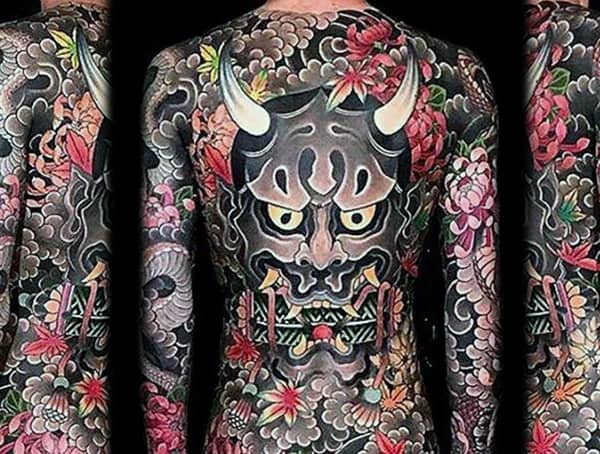
Before the Han Dynasty in China, tattooing or Wen Shen was not held in the highest esteem by the general populace. The art was looked down upon, as a defacement of the body. Some Chinese people, however, such as the Dai and Li people, practiced the art as a rite of passage. Both tribes used tattooing to accent their features; facial features for women and as a highlight to musculature for men. After the Han Dynasty, it was believed that only criminals wore tattoos.
Irezumi, or Japanese tattoo art, was always done as a full body suit or a full sleeve, always to be hidden under the clothing. It was traditionally held that only prisoners or criminals would get tattoos. Only after the opening of the 19th century were tattoos accepted in the mainstream population, though that is a tenuous acceptance because it is considered rude to show them off in public. Japanese tattoos were colorful and vibrant, practically tapestries on the skin. Their association with the Yakuza, or Japanese mafia, has held the art form back from mainstream acceptance for many years.
Japanese tattoo designs are massively popular with people today. It’s the most used language when looking for tattoo inspiration, with Japanese-inspired tattoos, such as Koi fish, dragons, samurais, and geishas, some of the most popular. Statistics reveal that 46% of 18-29-year-olds have a Japanese tattoo, while 39% of 30-59-year-olds also have some Japanese ink.
Australian and Polynesia

The people of Polynesia and New Zealand are credited with taking tattooing out of the spiritual realm and into the realm of body art. From geometric designs to a person’s genealogy, Polynesian tattooing has been honed into an amazing form of art over thousands of years. Designs that were placed on the front of the body were symbolic of the future. If the design, or “moko,” was placed on the back of the body, this was a commemoration or celebration of an event or a person from the past.
Polynesian people are also credited with naming the craft with the word “tatu,” which means “to mark something.” Other variations from the late 1700s onward have been “tatatau” and “tattau.”
The Aborigines of Australia crafted intricate and richly symbolic tattoos of animals and abstract designs. Tattoos were used to aid in healing, celebrate a person’s heritage, and honor man’s ties with nature. Colors of black, red, and white have always been popular for tattoos in this part of the world.
North and South America
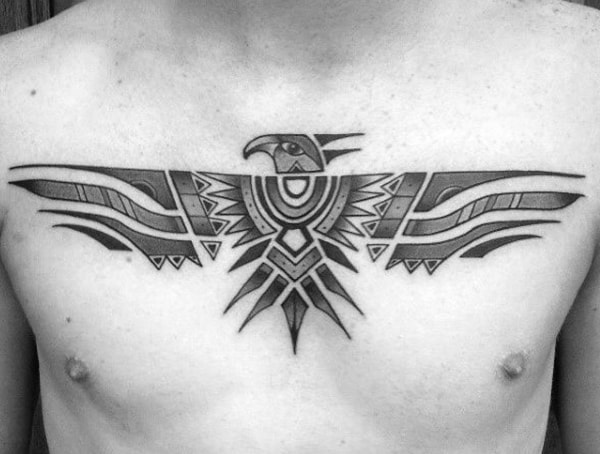
The ancient peoples of Chile and Peru marked themselves with stylized animals, especially birds and jaguars. They tattooed their torsos, limbs, hands, fingers, and even their faces with designs very similar to the ones they used in their clothing and blankets. Similar designs are also found on their pottery.
North American tribes often used tattoo designs that had been passed down through the generations for thousands of years. Sometimes it was only the shaman or warriors who wore certain designs; others were reserved for women or personal expression.
Animal paw prints, such as bears or wolves, were common designs. Arrows, animal heads, and even feathers were all symbols that meant something to the wearer as well as their society at large. Brown, black, red, blue, yellow, and white tattoos could be seen; though the most common designs were either black or red.
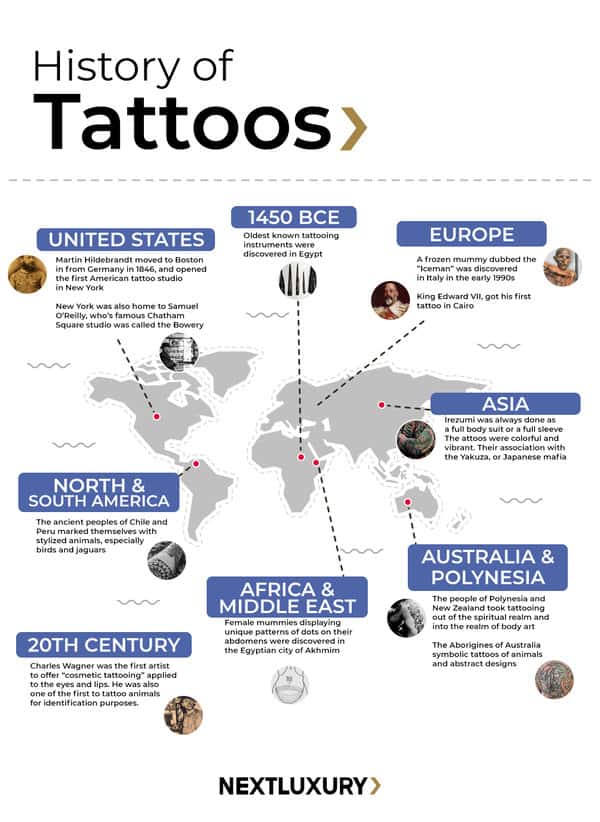
Tattoos in the United States

Tattooing has waxed and waned in popularity throughout human history and the US is no exception. It was originally believed to be something that only sailors, criminals, and circus “freaks” did.
Today, it is widely accepted as a form of self-expression and talented tattoo artists are as highly sought after as some clothing designers. It’s no surprise that millennials (18-35) are the most likely to sport tattoos, with another Harris Poll finding that 37% of them have a minimum of two, and 15% have more than five.
It’s also a billion-dollar industry, with a net worth of over $3 billion. Over the next ten years, it’s expected to grow by about 8% annually making it one of the most profitable industries in the world.

Today, it is widely accepted as a form of self-expression and talented tattoo artists are as highly sought after as some clothing designers. People around the world sport ink, for almost as many reasons as there are people. Interestingly, those reasons haven’t varied much from the first time a person chose to make a permanent mark upon himself or herself. Memories of loved ones lost, to mark military service, to make themselves stand out from others, all perhaps with a dash of rebellion, serve to make tattooing something that defines the desires of the human condition.
The art of tattooing in the US has as rich and colorful a history as that in many other countries. Beyond the ceremonial and personal tattooing done by the Native Americans, most of the population knew very little about the art. Prior to the 1920s, tattoos were thought to be something for “sailors,” such as common in Europe at the time. Many people grew up without ever seeing a tattoo.
With the booming popularity of circuses and sideshows, this was soon to change. Pioneers like Betty Broadbent and Lewis Alberts would soon introduce the art to entirely new audiences from Coney Island to Clearwater.
19the Century New Tork
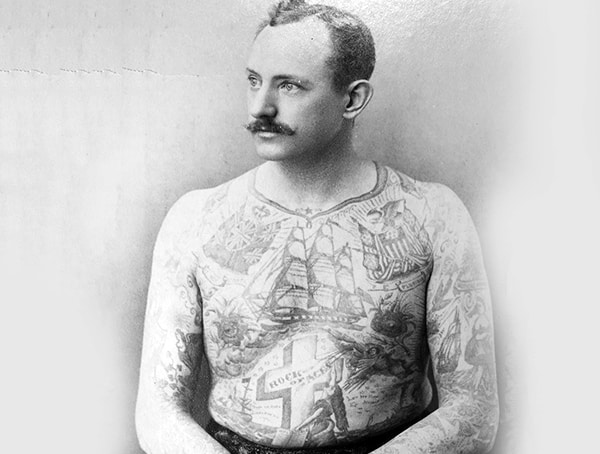
Martin Hildebrandt, a professional tattoo artist from Germany, moved to Boston in 1846. He is credited with opening the first American tattoo studio in New York, thereby making tattoos accessible to anyone who desired the art. Prior to his studio opening, most people who had ink had traveled overseas to get it. Martin was famous for his art on both sides of the Civil War; Union and Confederate soldiers alike sported his designs.
Martin’s daughter, Nora, was fully covered in her father’s artwork and displayed herself as one of the earliest American Tattooed Lady exhibits. She traveled with Barnum and Bailey circus throughout the 1890s, showing off her father’s work with pride.
New York was home to another famous tattoo artist of the time: Samuel O’Reilly. His famous Chatham Square studio was called the Bowery. Tattooing ran in his family: his cousin was well-known British tattoo artist, Tom Riley. In 1891, Samuel patented the first electric tattoo machine, based on the design of an electric pen by none other than Thomas Edison. This revolutionized the art by speeding up the process; prior to the electric machine, most artists plied their trade via needles attached to a wooden handle.
Samuel is credited with tattooing thousands of people at the Bowery, including many circus folks. At least 50 of the most well-known fully tattooed exhibits of the time were sporting Samuel’s designs. One of his most famous duos was Emma and Frank DeBurgh. Both of them sported full-body artwork that included detailed copies of famous paintings, such as DaVinci’s Last Supper, with plenty of flowers and animals. The loving couple also had their own names inked onto their bodies.
Lewis Alberts, born in New York in 1880, got his first tattoo when he was in the US Army in the early 1900s. During his tour of duty, he was stationed in the Philippines where he fell in love with the quality and artistry of their tattoo designs. Unsatisfied with some of the work being produced in the US he set up his own shop in Brooklyn where he worked to redesign other artist’s “flash” and quickly became famous for the quality of these new designs. He moved his shop to New Jersey in the 1920s and continued to practice the art until he passed away in 1954.
Into the 20th Century

Upon Samuel Riley’s death in 1908, his apprentice, Charles Wagner, took over the Bowery. Charles would soon make a name for himself as a premier tattoo artist. One of his most famous clients was the lovely Betty Broadbent, the first person to be honored by the Tattoo Hall of Fame.
Betty was covered with more than 560 individual tattoos and she was a hit wherever she went. Only her face and lower arms were uncovered. She began touring with Barnum and Bailey Circus in 1927 and traveled the world for the next 40 years, showing off her artwork not only in the US but also Australia and New Zealand. Betty was known as a go-getter and not afraid to speak her mind. In 1939 she entered a beauty pageant at the New York World’s Fair simply to challenge traditional ideas of “beauty.” She became a popular tattoo artist herself when she retired to Florida in the late 1960s.
Charles Wagner was the first artist to offer “cosmetic tattooing,” or permanent make-up applied to the eyes and lips. He was also one of the first to tattoo animals, such as dogs and horses, for identification purposes. Sadly, when he died in 1953, his studio was empty directly into the city dump. It is believed that thousands of original drawings and photographs were destroyed. Regardless, he is still named as one of the premier Tattoo artists of America.
The 21st Century and Beyond
Thanks largely to the pioneering American tattoo artisans of the 19th and 20th centuries, Americans have accepted the art of tattoo into mainstream culture. Since the 1970s and 1980s, there are more professionally trained tattoo artists in almost every city in the US than ever before. Since the 1990s, tattoo design exhibits take place right beside those of painting artists and sculptors.
Not only has the artwork been widely accepted, but collecting tattooing memorabilia has expanded to include the flash of famous artists as well as their tools. “Flash” is the name given to the sketches and paintings used by artists to show their skills to their clients. Flash generally adorns the walls of their studios. People can choose a flash design for a tattoo or have the artist design something new for them.
When it comes to where people like getting tattooed, there is a wide range of body parts. A 2019 study by Statista discovered that 27% of women get a tattoo on their ankle compared to 34% of men who prefer a tattoo on their upper back or shoulder.
In general, the study also found that 40% of Americans have tattoos on their forearm, making this the most popular spot to get a tattoo. This was followed by the back (39%), hand or wrist (34%), upper arms (33%), shoulder (28%) and chest (28%), lower leg (23%), and foot and ankle (22%).
Well-known modern tattoo artists in America include Kat Von D, Hannah Aitchison, and her brother Guy, Filip Leu, Paul Tinman, and Paul Booth. They are all famous for their unique designs and in some cases, startlingly life-like portraits inked from photographs.
Artistic Self Expression
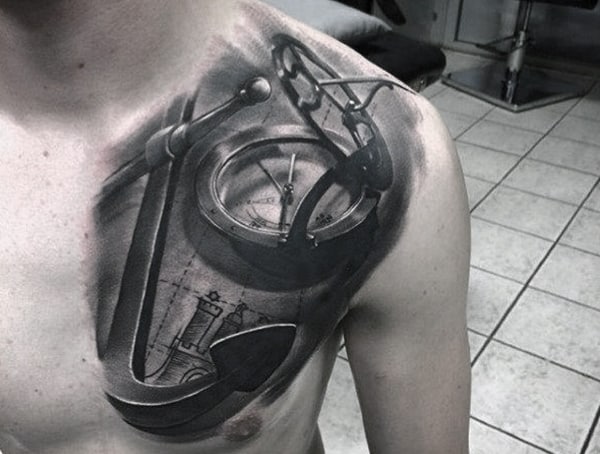
More people are sporting ink in the 21st century than ever before. Many of the designs are like those done by artists in the previous centuries, with lots of stereotypical images of patriotism, nostalgia, and homesickness; yet these have been widely improved upon by artists adding their unique perspectives.
Clients have an almost unimaginable choice in designs and colors, from simple black and white to glow-in-the-dark ink, tattooing as a modern and increasingly artistic form of self-expression is here to stay.
See more about - Tattoos Guide For Men
